Transport on demand? How ‘Mobility-as-a-Service’ could revolutionize the way we travel
Imagine having a whole range of connected transport methods at your fingertips, letting you instantly research, book and pay for your whole journey using a single app.
You could take a pay-per-go electric scooter from the stand by your house, to the bus stop down the road just in time to catch a ride. When you get to the end, there would be an autonomous electric taxi waiting to take you the rest of the way.
This is the ultimate promise of mobility as a service, or “MaaS” – a connected eco-system of mobility solutions that, even in a post-Covid world, could transform our cities and revolutionize the relationship between our society and transport.
What is Mobility as a Service?
Simply put, Mobility-as-a-Service is the seamless integration of an [on demand] journey from door-to-door, combining a range of transport methods that are all bookable via a single point of payment – usually a smartphone app.[1] Its two primary pillars are integration and accessibility, or ease of use: the integration of different types of transport, and the ability to conveniently book and pay for an entire journey at one go, in one place.
The potential benefits of a MaaS systems are readily apparent – ranging from fewer unnecessary journeys, the associated reduction in carbon emissions and a decrease in congestion in our crowded cities and streets, to the enhanced convenience and potential cost savings for consumers.
There are no strict definitions of which methods of transport can be part of a MaaS ecosystem. Anything is possible, as long as it can be plugged into the system, from taxis and bike sharing, to autonomous vehicles, public transport, refueling and even payment systems.
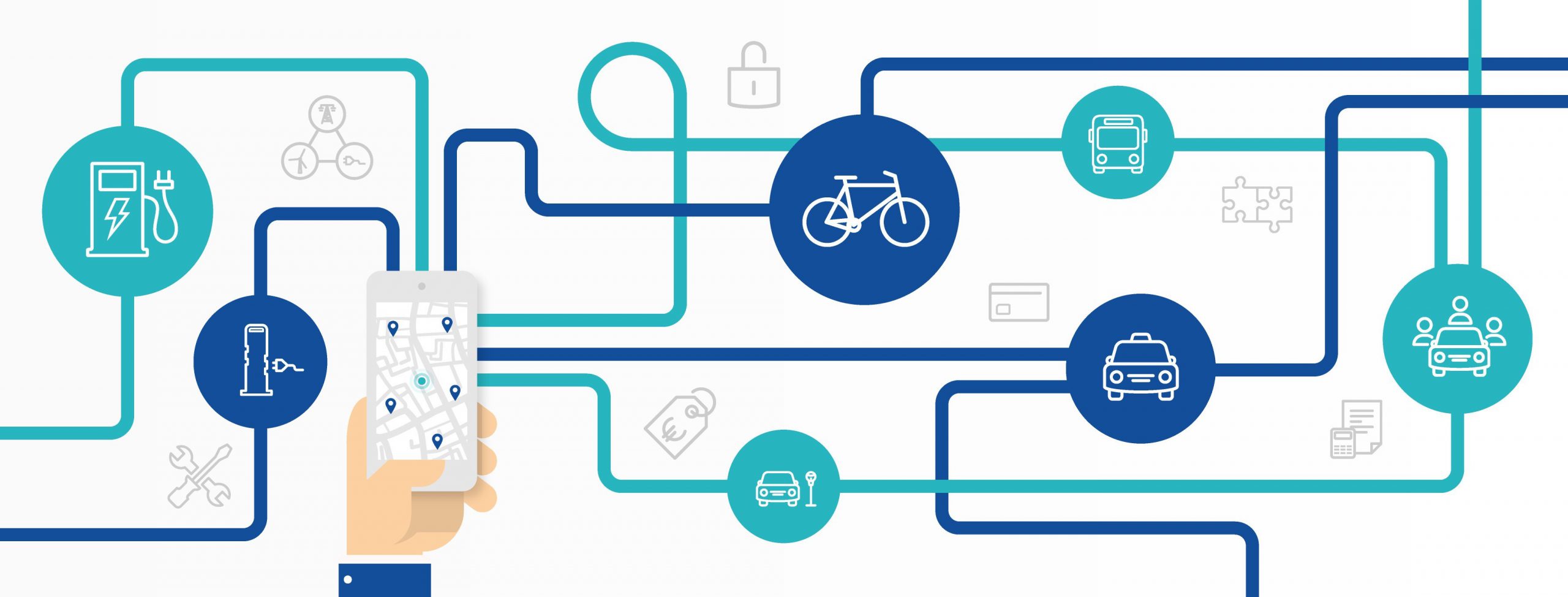
One of the main objectives of MaaS systems is to remove – at least partially – the privately-owned car from the personal transport equation as the only, or primary, means of making our journey. Historically, doing away with private vehicles would have left the commuter relying on inflexible and inconvenient public transport options that are only available on specific routes at specific times, and with limited thought given to interconnections between different modes of transport, not to mention the very real risk of delays, overcrowding and cancellations.
MaaS though, attempts ‘fills in’ any gaps in the journey, viewing the trip as a single service provision, so travelers are not left waiting for connections and should not have to complete any sizeable stretch of their journey on foot.
Growing the MaaS market
According to a report by PS Research, the global MaaS market is expected to be worth more than US$ 347.6 billion[2] by 2024.

Among the chief growth drivers are the rapid advances being made across three key technologies that are essential to successful MaaS systems: mobile communications, the Internet of Things (IoT), and big data.
The mobile device – smartphone – is the front-end of the MaaS experience, allowing people to plan, book, and pay for a journey. This is underpinned by the highly advanced wireless networks that enable mobile communication systems.
These, in turn, give rise to the Internet of Things: physical devices, vehicles and appliances that are connected to these networks and which people can interact with via their smart device.
The third element is big data. These interactions between people, services and systems online create vast repositories of data, which can be analyzed and used to improve operations and efficiency in allocating resources. As the volume of data increases exponentially, machine learning and AI can be used to gain intelligent insights that can increase the value and efficiency of services.
As well as the growing availability of mobile technology, the on-going urbanization of our societies is also driving the need for alternative mobility solutions. According to the United Nations[3], 55% of people worldwide live in cities today, a figure which is expected to grow to 68% by 2050. Urbanization combined with population growth is set to add another 2.5 billion people to cities[4] over the next three decades.
Lots of people means lots journeys, which in turn, can mean of cars, buses, etc., and if those vehicles are powered by fossil fuels – then lots of pollution, too. Finding a way around this is also fueling growing interest in MaaS systems. Other factors include consumer demand. People are increasingly used to having what they want, when they want it, from ordering food and goods online to booking a table at your favorite restaurant. Is the expectation to be able to go from A to Z at the touch of a button any different?
What are the benefits of MaaS systems?
One of the huge benefits of MaaS is sustainability. Once operational, MaaS systems can reduce the need for so-called ‘gas-guzzling’ private vehicles and thus help to reduce the amount of carbon emitted into the atmosphere. This is particularly important given the climate emergency that has seized international attention over the last two years and the global drive towards achieving net-zero emissions. Factors which, in a world increasingly sensitive to the threat of virus pandemics, are likely to intensify.
According to the UN Environment Program, (UNEP) the transport sector is the fastest growing contributor to climate emissions. Particles from cars and other vehicles – including black carbon and nitrogen dioxide – also contribute to a range of illnesses including respiratory conditions, strokes, heart attacks, dementia and diabetes[5].
In the United States, cars and trucks account for nearly one-fifth of all US emissions, while the transportation sector as a whole, which includes cars, trucks, aircraft, trains, ships, and freight, produces nearly 30% of all US emissions contributing to global warming – more than almost any other sector.[6] In the UK, meanwhile, it is estimated that air pollution causes an estimated 40,000 early deaths every year. [7]
While data varies, many scientists believe that if we keep polluting the atmosphere at current levels, we can expect a rise in global temperatures of several degrees by the end of the century, with predictably devastating consequences. Dwindling fossil fuel supplies, with oil and gas running out in as little as 50 years, makes the MaaS argument even more urgent.[8]
The desire to reduce congestion and pollution is already a major factor in how big cities are developing their transport policies. The mayors of Paris, Madrid, Mexico City and Athens[9], for example, have said they plan to ban the most polluting diesel vehicles from their city centers by 2025.
While the German cities of Bremen and Hamburg have created ‘transport hubs’ that combine multiple modes of transportation in one location. Analysis of their impact found Bremen’s 290[10] car share vehicles have removed the equivalent of 4,200 private cars from the city’s roads.
It is not just the impact on the planet, but also the potential climate-related financial savings for individual countries. For example, the costs of congestion alone in Europe are estimated at around €130 billion per year[11], or just over 1% of the EU’s GDP. By taking significant numbers of private vehicles off the road, MaaS could help to reduce congestion and the associated costs. Of course, removing thousands of cars from our roads could have a major impact on government tax revenues. According to the European Automobile Manufacturers Association (ACEA), motor vehicles account for €440.4 billion in tax contributions in the major European markets. Nevertheless, the all-round benefits of MaaS – financial, environmental, health, spatial, even societal – are expected to far outweigh any reduction in tax revenues.

“MaaS systems hold out the promise of a true win-win for all parties. They provide a fast, convenient transport solution for individuals. They reduce congestion, enabling greener, more livable urban communities and contributing to more efficient economies. And by reducing the overall number of vehicles on our roads – and the resulting pollution – they can play an important role in our journey towards net zero,” said Fady Jameel, Deputy President and Vice Chairman, Abdul Latif Jameel.
It could revolutionize the design of our cities, too. For decades, how people live – especially in the urbanized West – has been built around car ownership. Reducing reliance on the private car could give rise to urban centers designed for people, not vehicles, with more green spaces and larger pedestrianized areas. Indeed, creating new communities that are designed around people rather than motor vehicles is one of the key factors behind the concept of smart cities.
Challenges of MaaS construction
Despite the benefits of MaaS systems, their development to date has been patchy. The main challenges tend to fall into three categories: technology, perceptions and coordination.
MaaS by its very nature cannot exist in a bubble of isolation, it depends on the technology infrastructure to exist. And although technological advances have been rapid, big gaps remain in ensuring the seamless connectivity that MaaS systems depend on. Not least in terms of reliability. A study by uSwitch energy comparison service in the UK, for example, found that 56% of rail commuters struggled to connect to their mobile network on 3G or 4G. Even in London – one of the World’s busiest and most connected cities – although 3G, 4G and Wi-Fi may be available on most over-ground train lines, connections can be slow and often completely unavailable underground.[12]
Public perceptions, too, although moving in the right direction, do not seem ready to forgo the private car just yet, particularly among older generations. A 2018 ‘Evolution of Mobility’ study by Cox Automotive[13], for example, found that just over half of Generation Z consumers agreed that owning a vehicle was not necessary, the proportion dropped substantially as consumers got older.
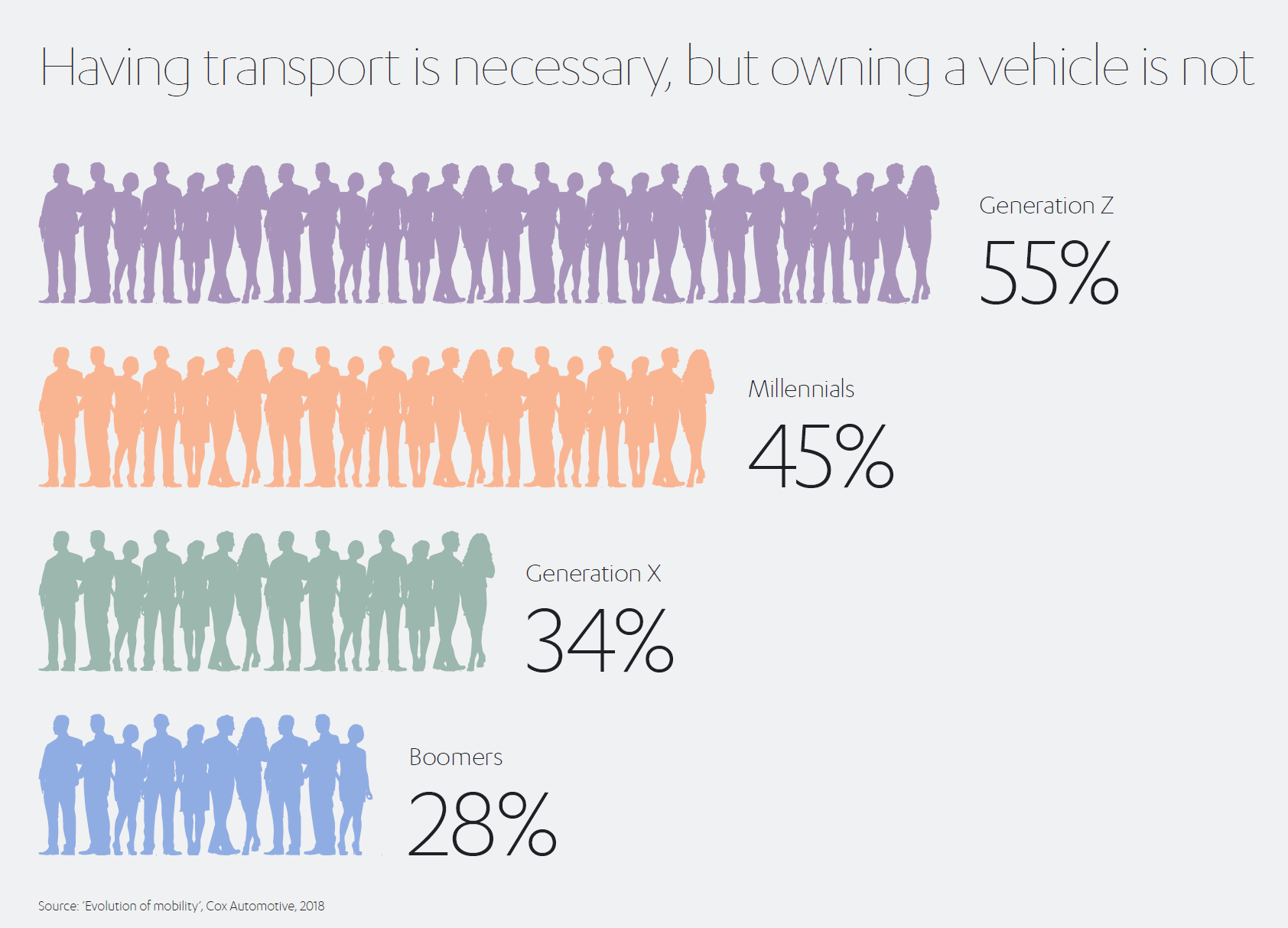
It is a similar picture when it comes to using technology to pay for services. While younger people are more open to booking and paying for services via their mobile phone, the pre-millennial generations are not, in general, quote so comfortable. In a 2018 Digital Payments survey by Visa[14], 65% of millennials said they have paid for products or services via mobiles, compared to only 42% of the general population.
Perhaps the biggest challenge to widespread MaaS adoption, though, is one of coordination and regulation. Without the buy-in, facilitation or coordination of government at a national, regional and local level, it will be hard for any private sector MaaS solution to gain traction. Private enterprises often function in siloes and tend to be – by their very nature – uneasy about sharing technology, while also worrying about falling foul of data protection laws when passing on commuter and customer information.
These were some of the findings by the Institute of Engineering and Technology in the UK. It produced a report on MaaS which stated[15] that many of the current commercial models used for procuring transport solutions were driving “unhelpful behaviors, siloed services and a protectionist position”.
Regulatory factors can also be an issue in some markets. For MaaS providers to run their operations effectively, it is necessary for them to collect and hold vast amounts of user data, from financial and personal information to location data, frequency of travel, payment methods and modes of transport. They also need to collect data related to infrastructures used such as car parking spaces, road conditions, EV charging points and congestion levels. This is a huge amount of data for any business to manage effectively and most importantly, securely, particularly in markets with strict regulations on data privacy, such as the EU’s General Data Protection Regulation (GDPR), which was itself borne from the policy impetus to protect consumers after a series of data security breaches by major social media platforms, and others. Given that data security failures continue to regularly feature in media, gaining consumer permission to collect and process such large amounts of personal data may prove problematic.
MaaS pioneers lead the way
These challenges are not unsurmountable, however, as a few pioneering countries are already demonstrating.
Finland and Singapore are leading the way through a combination of innovation culture and – crucially – a desire by their respective public authorities to commit to the concept of MaaS.
Finland’s capital, Helsinki, is trialing a MaaS system based on a mobility app called ‘Whim’[16]. Whim allows people to plan and pay for all modes of transportation. Commuters can book city bikes, e-scooters, taxis, public transport and rental cars on demand. The Helsinki pilot has been helped by significant buy-in by the local authorities. Helsinki’s dedicated traffic and street planning office, for example, has been able to ensure that parking spaces are located near areas where planners want commuters to switch to alternative modes of transport[17].
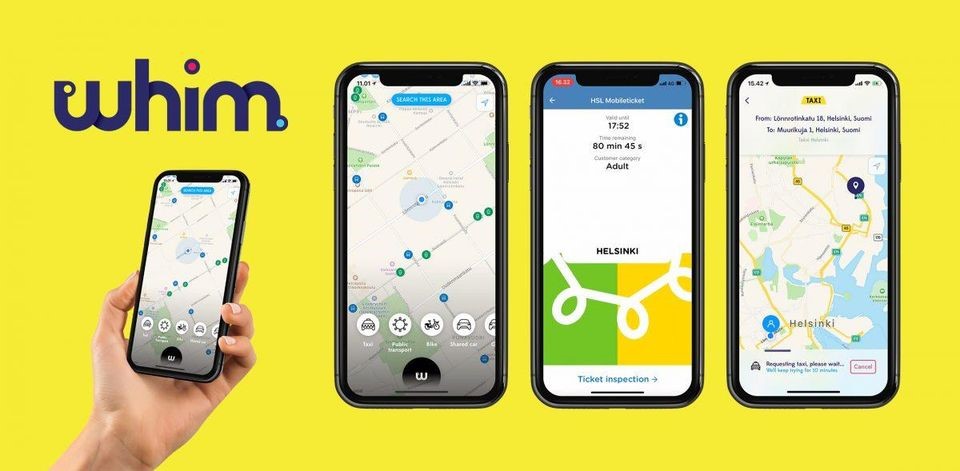
There is even a specific new law, known as the Transport Code[18], which requires transport companies to open up their ticketing functionality and data to third parties. The regulations also require the streamlining of payments so a ticket from one company can be used with another.
Singapore is another city leading the way in the development of MaaS systems. A start-up called MobilityX is working with Nanyang Technological University (NTU) and JTC Corporation to develop a MaaS system based on two apps – Jalan and JalanX. Jalan (the Bahasa language word for ‘to go forward’ ‘to pass’ or even ‘road’) integrates train and bus networks, including next generation tech such as bicycle-sharing systems and e-scooters, while JalanX is an on-demand bus service based on NTU’s campus and JTC’c CleanTech Park.
As well as developing the technology, the team behind the work see urban design as a crucial component of MaaS ecosystems. For example, one of the ideas being considered is to build car parks at the university’s main entrances, so visitors can leave their cars and use other modes of transport to get about the sprawling campus.
As in Helsinki, the support of the public sector has been crucial in getting the MaaS system off the ground, namely Singapore’s Land Transport Authority (LTA). The LTA is already developing dedicated cycle networks in public housing estates and redesigning roads to be more pedestrian and cycle friendly, helping to lay the ground where a fully-fledged MaaS transport network can take root.
Japan is also taking positive steps towards MaaS adoption. The cities of Kitakyushu and Fukuoka have introduced a MaaS system, in collaboration with hybrid/electric vehicle pioneer Toyota, public transport operator Nishi-Nippon Railroad (Nishitetsu), and a number of local partners.
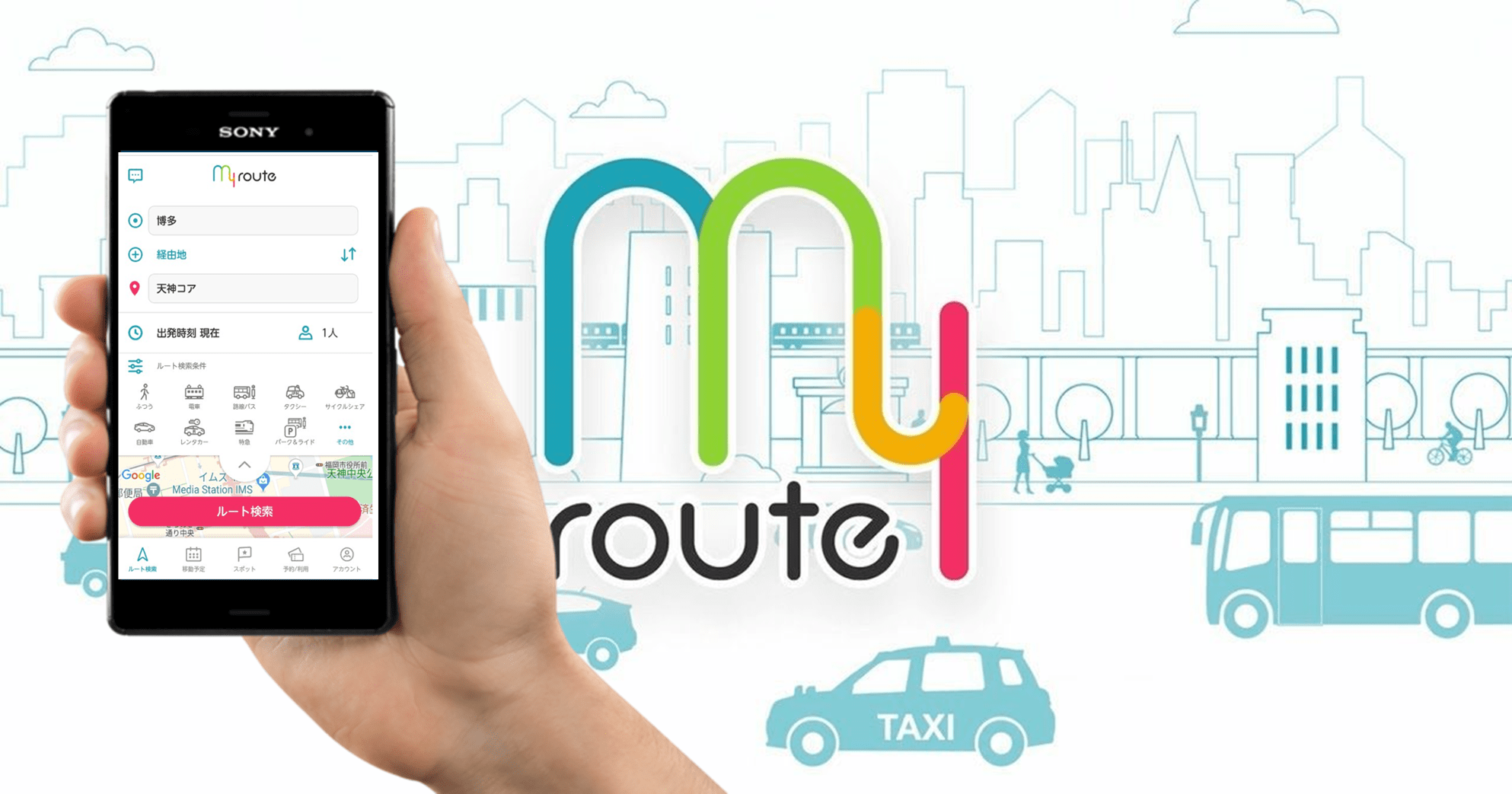
The My Route MaaS system includes three main components:
- A multi-modal route search, including public transport (e.g. bus, rail, subway), automobiles (e.g. taxis, rental cars, car sharing, private vehicles), bicycles and walking
- Reservations and payments
- Shop and event information search
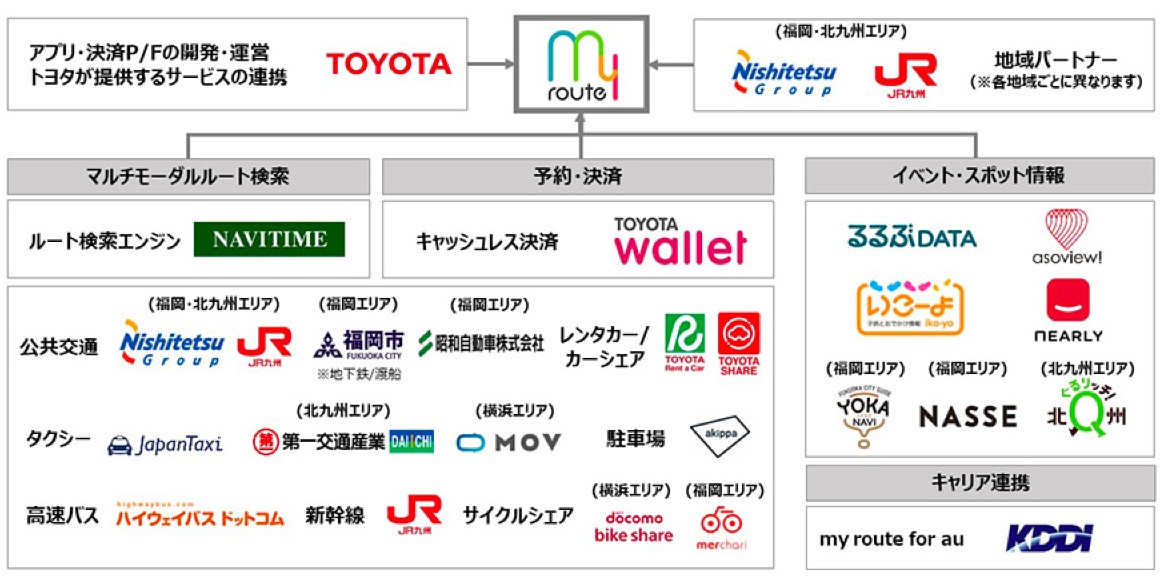
The My Route app was downloaded more than 300,000 times during a year-long trial, with satisfaction rates of around 80%, prompting the full roll-out in November 2019.
The partnership is in line with Toyota’s official ‘Connected & MaaS strategy’, which will see it integrating a proprietary mobility service platform into all its new vehicles in Japan, U.S. and China by the end of 2020[19]; using big data to drive innovation within Toyota; and linking up with external partners to create new mobility services.
In July 2019, it concluded an agreement with Didi Chuxing (DiDi) to expand MaaS collaboration in China[20]. As part of this agreement, Toyota will invest US$ 600 million in DiDi and establish a joint venture for vehicle-related services for ride-hailing drivers.
The tie-up with DiDi came little more than a year after Toyota agreed a similar deal with Singaporean ride-hailing company Grab[21], to strengthen their existing partnership and drive further advances in MaaS across Southeast Asia.
Key role of electric vehicles
Two fast-developing mobility technologies that could help to entice people out of their gas-guzzlers and into MaaS are electric vehicles and autonomous vehicles. With taxis and ride-sharing expected to be key components of most MaaS systems, they will need to be electric – and preferably autonomous – if they are not to undermine the purpose for which the entire endeavor has been partly designed.
Recent advances in battery technology could have a dramatic impact on the performance and perceptions of EVs, which can only benefit the arguments for MaaS systems.
The new GM Corsa E, for example, has a range of 209 miles[22], long enough to drive between London and Manchester on one charge. While the Tesla Model S Long Range Plus has a reported range of 390 miles[23] – far enough to drive from Manhattan to Montreal, or Abu Dhabi to Muscat.
One of the frontrunners in this market is RIVIAN, a fast-growing US-based EV and mobility firm in which Abdul Latif Jameel is a primary investor. RIVIAN’s first two models, an electric pickup truck and an electric SUV, are due to go into production in 2020. The vehicles – the R1T and R1S respectively – are classed as ‘Level 3 Autonomous’, meaning drivers’ eyes can safely be taken off the road.
Chinese EV manufacturer NIO, founded in 2014, specializes in autonomous EVs, and in 2016 was granted an Autonomous Vehicle Testing Permit in California to begin trialing its cars on public roads.
Meanwhile, Chinese-Swedish joint venture Lynk & Co, founded in 2016, specifically targets younger buyers by emphasizing its internet connectivity and wide-ranging customization options. In 2018 it logged sales of more than 120,000 in China.
Autonomous vehicles would also help reduce the problem of city center congestion. In theory they would be able to pick up passengers from, say, their home and drop them off in the city center to a place of work or social setting. The vehicle could then head back out of the city to either park up in carparks way beyond the congested areas of the city center, or to pick up another passenger.
As transport technology itself becomes more sophisticated, there is even the possibility of more futuristic methods being thrown into the MaaS mix.
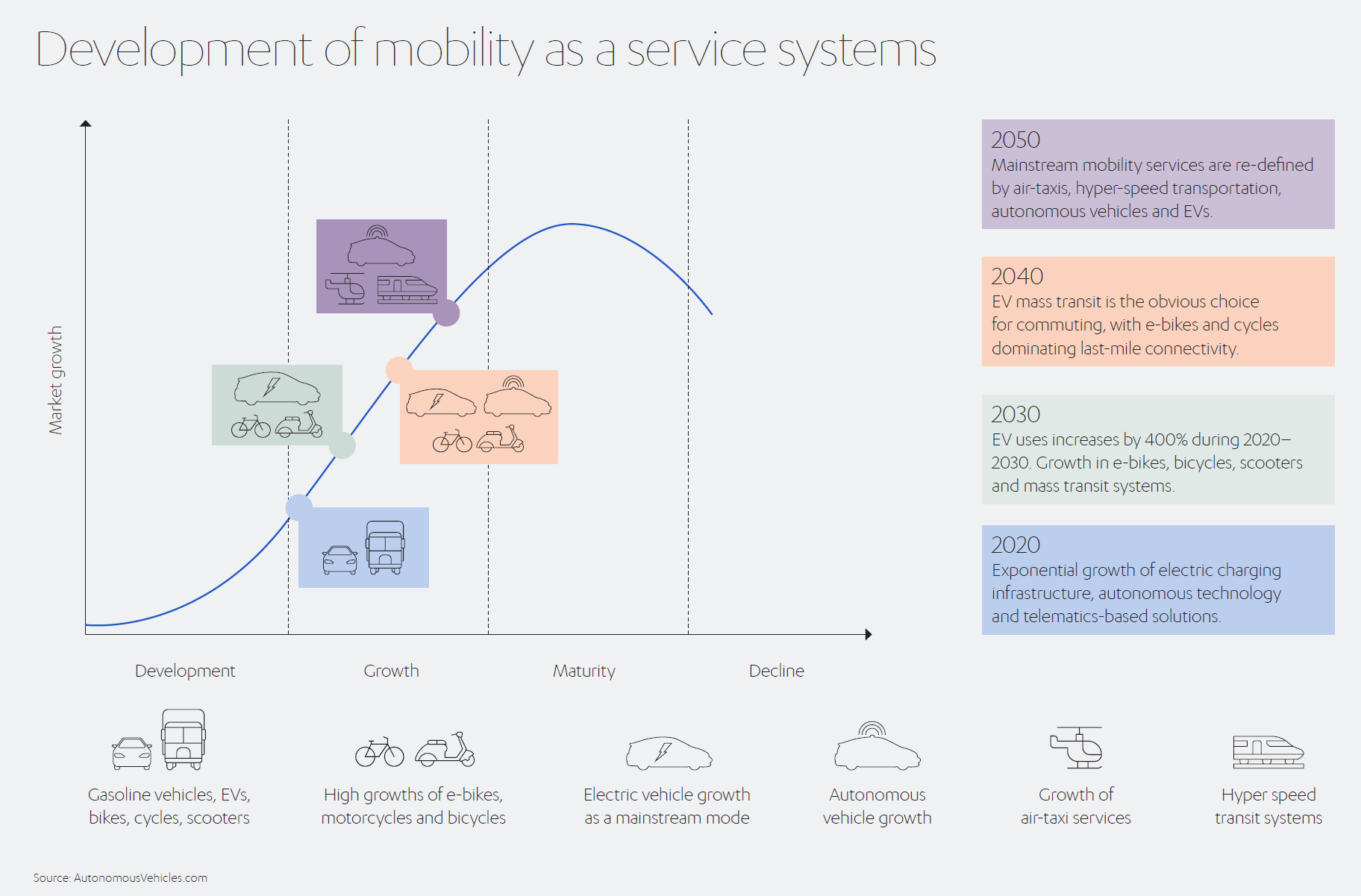
Joby Aviation’s electric air taxi, for example, is a piloted, five-seater vehicle capable of flying 320 kilometers per hour and covering a distance of 240 Km on a single charge. The company completed a US$ 590 million Series C funding round in January 2020, including investments from Toyota Motor Corporation and the investment arm of Abdul Latif Jameel.
Joby’s air taxi service will make use of in-house developed electric vertical take-off and landing (eVTOL) aircraft that will in part benefit from Toyota’s vehicle manufacturing experience. Because it uses an electric drivetrain and multi-rotor design, Joby Aviation says its eVTOL is “100 times quieter than conventional aircraft during takeoff and landing, and near-silent when flying overhead.”
These benefits make eVTOL craft prime candidates for MaaS-enabled urban aerial transportation networks. As well as Joby, a number of companies, including Airbus[24] and China’s EHang[25], are also working on this technology for city-based, short-hop transit for people and cargo.
The impact of the recent pandemic crisis
There are few facets of society that have not been affected by the global crisis around COVID-19. Mobility is no exception, with the impact of social distancing guidelines perhaps the most obvious factor. Inevitably, addressing concerns around social distancing and the practicalities of enabling social distancing are major challenges for all forms of transport, not only MaaS systems. In the short term, it is likely people will gravitate back towards private vehicles as the easiest way to stay safe. However, in the longer term, as a ‘new normality’ begins to return, MaaS systems could actually support future transport strategies that are aligned with social distancing requirements.
For example, a recent McKinsey report on the impact of COVID-19 on mobility solutions stated that the crisis could “delay the development of advanced technologies, such as autonomous driving, as OEMs and investors scale back innovation funding to concentrate on day-to-day cash-management issues.”
Looking to the future, however, it found that AVs, micromobility solutions, and other technologies that support physical distancing could benefit, as “customer demand for these solutions could soar once the initial crisis subsides, increasing their attractiveness to investors.”
It concluded that, “many changes in the modal mix are temporary and that shared-mobility solutions, including public transit, will rebound and continue to capture increased market share. Micromobility solutions could also pick up more quickly if strict disinfection protocols are installed.”
Making MaaS a reality
The technology required for MaaS is developing at a rapid pace. While the booming popularity of app-enabled taxi and ride-sharing services such as Lyft, Uber and Careem, are quickly reshaping our view of transport from a concept built around ownership, to something we pick up and put down when we’ve finished with it.
An increasing willingness to use mobile phone apps to make payments is also a crucial factor in bringing MaaS systems within touching distance.
The biggest long term obstacles remain around the standardization of services and greater coordination between the public and private and sectors. But as Singapore and Helsinki are showing, with the right support, commitment and investment, MaaS does not have to be an aspiration for tomorrow. It could be a reality today.
Innovative investment on a global scale, like RIVIAN and Joby Aviation, is the cornerstone of Abdul Latif Jameel’s approach to business. Through its continued investment in the ‘infrastructure of life’ in key markets around the world, from transport to energy, e-commerce to real estate, Abdul Latif Jameel is committed to supporting a new approach to mobility that can help to deliver a cleaner, greener future for all.
[1] https://maas-alliance.eu/homepage/what-is-maas/
[2] Global mobility as a service market report 2019, PS Research, August 2019.
[3] https://www.un.org/development/desa/en/news/population/2018-revision-of-world-urbanization-prospects.html
[4] https://www.un.org/development/desa/en/news/population/2018-world-urbanization-prospects.html
[5] Gearing up for change: transport sector feels the heat over emissions
[6] https://www.ucsusa.org/clean-vehicles/car-emissions-and-global-warming
[7] Gearing up for change: transport sector feels the heat over emissions
[8] https://ourworldindata.org/how-long-before-we-run-out-of-fossil-fuels#note-6
[9] https://www.unenvironment.org/news-and-stories/story/gearing-change-transport-sector-feels-heat-over-emissions
[10] https://sharedusemobilitycenter.org/build-your-own-mobility-hub-7-lessons-for-cities-from-bremen-germany/
[11] https://www.mdpi.com/2071-1050/12/6/2200/htm
[12] https://www.uswitch.com/media-centre/2019/02/signal-failure-nine-10-rail-commuters-cut-off-connectivity-issues/
[13] https://www.coxautoinc.com/learning-center/2018-mobility-study/
[14] https://www.itproportal.com/features/digital-payments-in-2018-how-millennials-are-driving-next-gen-commerce/
[15] https://www.theiet.org/media/3666/mobility-as-a-service-report.pdf
[17] https://urbanmobilitydaily.com/maas-evs-and-avs-how-helsinki-became-a-transport-trendsetter/
[18] https://www.citylab.com/perspective/2018/10/helsinkis-maas-app-whim-is-it-really-mobilitys-great-hope/573841/
[19] https://global.toyota/pages/global_toyota/ir/presentation/2019_q3_competitiveness_en.pdf
[20] https://global.toyota/en/newsroom/corporate/28993116.html
[21] https://global.toyota/en/newsroom/corporate/22940912.html
[22] https://www.vauxhall.co.uk/cars/new-corsa/electric.html
[23] https://www.tesla.com/blog/longest-range-electric-vehicle-now-goes-even-farther
[24] https://www.airbus.com/innovation/urban-air-mobility/vehicle-demonstrators/cityairbus.html





 1x
1x

 Added to press kit
Added to press kit


